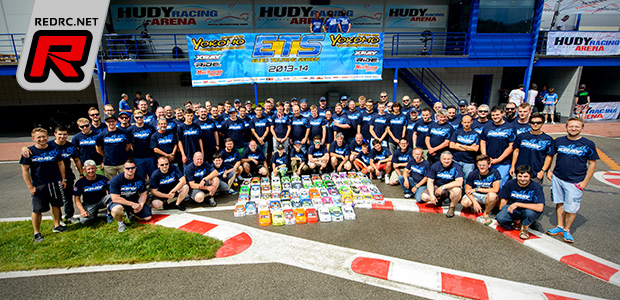Exclusive – Making the Xray T4’15
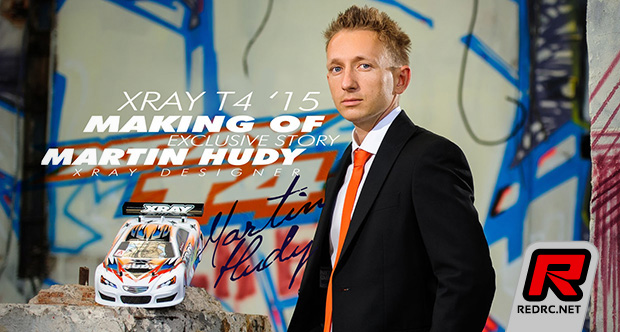
Following our exclusive interview with Xray’s on-road designer Martin Hudy about the forthcoming T4’15 electric touring car we now have a more in-depth article in which Martin explains the challenges of making an already proven car even better.
It has been a few years since we internally reorganised the responsibilities of project development, and at that time I assumed full responsibility for the entire Xray on-road platform development while Juraj took over off-road platform development. This arrangement has allowed both of us to fully focus on the cars we are responsible for, which in my case are the T4, NT1, RX8, X12, X10 and the new F1 project.
With a typical 1-year lifecycle, I started to work on the T4 after I finished and put into production the NT1 and RX8, which was some time in early January. By then we already had half of the winter season done, and the feedback and successes of the T4’14 were both very good so I expected a real challenge for further development. As a driver myself, I never have enough steering, cornering speed, and traction so there is always room for improvement. I was very happy with the performance and handling of the car on carpet, but I knew we could still make improvements for low-traction asphalt conditions. The World Championship is on asphalt this year, and I wanted to have the best possible car for that most important event.
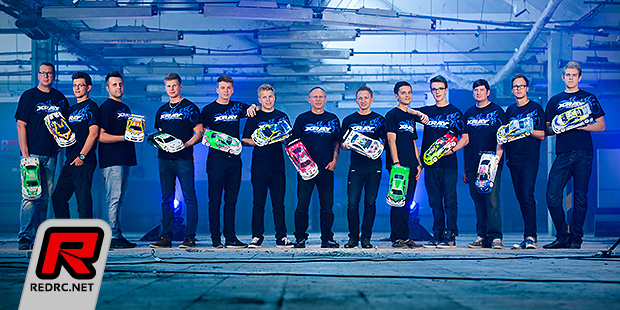
In April, I travelled with Alex and Francesco Martini to Florida, USA for the Worlds warm-up, and stayed at the track to do as much testing as possible to prepare us for the outdoor season. But especially I wanted to collect feedback from the track and test some of the new 2015 parts which were in an early prototype stage. As usual we had plenty of new prototypes packed with us and we wrenched on the cars from early morning until late at night, testing dozens of combinations and dozens of different parts and ideas. As expected (and typically), many of the parts did not give any improvement, some parts seemed to have good progress but would require a lot of more refinement, and some new parts showed great potential. The Worlds warm-up practice was very constructive and I was happy that we had a clear idea on which way to head. One of the most significant improvements was our new type of rear suspension which had a project code name of “Active Rear Suspension” which we later turned into its official name ARS.
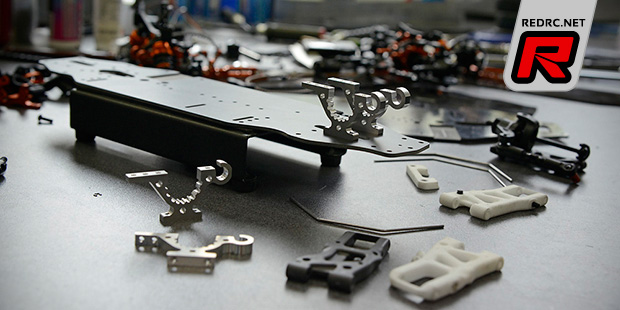
ARS is very simple yet effective, and depending on the adjustment of the rear linkage will give increased or decreased rear toe-in mid-corner, and thus increasing traction or decreasing traction and increasing cornering speed. It is a very easy and extremely useful set-up feature which will help my never-ending quest for more traction and steering.
The concept of ARS suspension was brought to my attention during a brainstorming session with Juraj a long time ago. Personally I have had experience with this type of suspension long time ago with the M18 concept, while Juraj used this active rear suspension on his first off-road car back in the 1980’s. I liked the concept and really wanted to try this suspension concept on the T4.
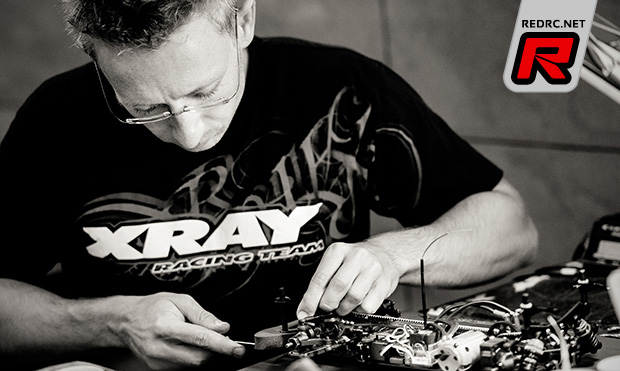
Once I started in CAD design to draw all the parts, I realised that this would not be as easy as I had originally thought because the ARS suspension had to have exactly the same flex geometry as the standard suspension so a driver would not notice (at first) any difference between the standard and ARS rear suspensions. The first idea was to make the same M18 rear suspension and upscale it to T4 size, and instead using a fixed upper arm we would create adjustable linkages that could change the camber. The current T4 has great flex characteristics, so it was very risk to make such a radical change in the suspension design. Also, doing the required intensive testing with something so completely different would take months and months. As I wanted to test the ARS at the Worlds warm-up, there was no time for such a radical change and as such I had to think of another way that would be quicker & easier to implement but still have the same desired effects. Simple ideas are usually the best solutions, so as the clock was ticking away I thought of a way to use the most amount of currently existing parts in different ways. In short, I came up with the simple idea to use the front suspension in the rear.
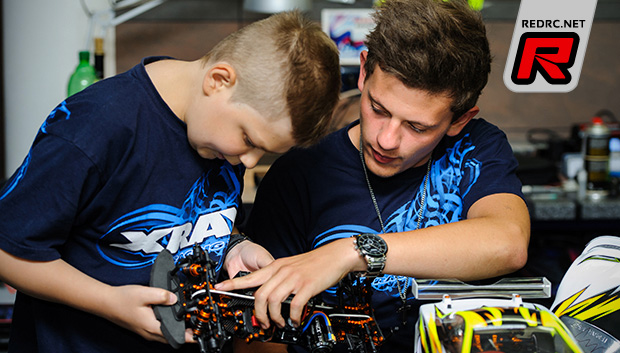
To proceed in the quickest and most efficient manner, in CAD I just swapped all the front suspension components into the rear, used 0 degree caster block, and examined aspects of geometry – wheelbase, track-width, roll center, camber – and compared them all with the standard suspension. After a few stressful moments I calmed down and realised it would not be very difficult to achieve the desired parameters with some easy changes. In order to achieve the desired wheelbase, I modified the width of the arm and made new shock mounting holes to keep the same shock angles as the standard suspension. Because the original front arm has the shock position in the same position as the middle anti-roll bar in the rear, I only had to twist the arm and the anti-roll bar position and problem was solved.
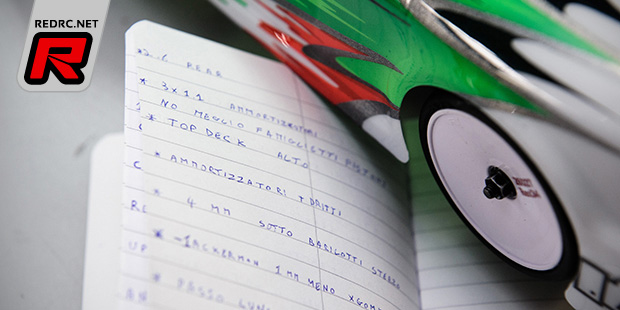
To have an accurate comparison of the ARS vs. standard suspensions, it was very important to have same flex characteristics. I realised that there is too much flex when I use the standard C-hub for ARS, so the fastest solution was to produce an aluminium C-hub with 0 degree caster. My expectation proved to be correct and the flex was now almost identical to the standard suspension. So now the only remaining task was to figure out where to mount the adjustable linkages. You can adjust the reactive toe effect of the ARS suspension by adding or removing shims under the linkages on both sides, but I had no idea how the length of the linkage would effect the characteristics of the suspension. Not to miss anything, I made multiple link anchor positions, and so then the only thing remaining was to test them all to experience how linkages of different lengths and various end heights would behave. To test the various heights of the linkages and angles, I used a short anchor post and used different thickness shims to adjust it higher or lower very quickly at the track.
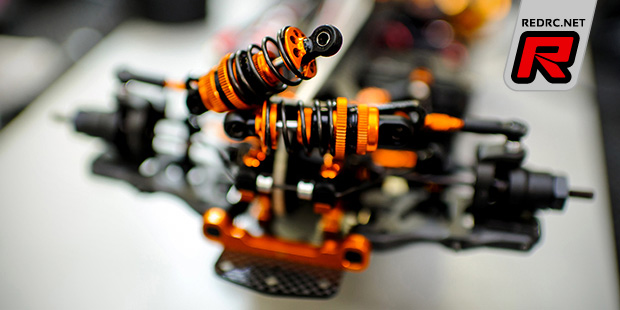
When it comes to the speed of prototyping, there is nobody else in the RC world that comes even close to our speed and flexibility. I wanted to test the suspension at an upcoming Xray Challenge race that was scheduled for a Saturday, and I finished all the parts on Thursday afternoon. On Friday morning a college friend of mine made all the CNC programs and production drawings, uploaded via intranet all the programs into the machines downstairs, and by the afternoon I had the parts on my table to mount and test the next day in a race. I wish everything in life could be so easy.
I was very curious and could not wait to hit the track with the new ARS prototype suspension. I started with a set-up that I knew well and had very good experiences with at our track: I set the rear toe-in at 3° and adjusted the linkage so the active toe-in would increase to 3.5°. Our factory track layout has all the various types of corners we need for thorough testing, including a very complicated triple chicane, so I could always get great feedback from testing of any new part of our track.
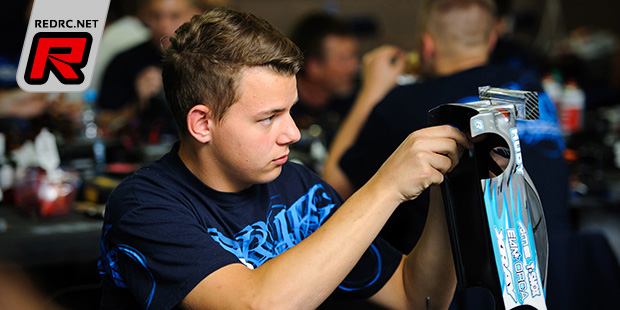
After testing the ARS suspension for the first time, I was very happy and satisfied – I immediately felt more traction mid-corner, and most importantly the car was much easier to drive in the chicanes. In the challenging triple chicane, I could perfectly feel the balance and the roll of the car.
After initial testing I tried different shimming combinations and also different positions for the anchor post on the chassis. I was quite surprised how much the car reacts to every small change, and so it really surprised me that moving the anchor post by 6mm more inside or outside on the chassis would make the huge handling differences that it did. I was satisfied – VERY satisfied – and I could rest for a little while. Well, a very short while.
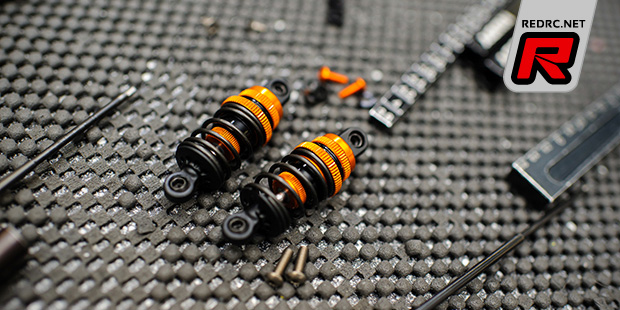
The next logical step was to have the ARS prototypes tested by the team. I made some final minor updates in the shape and design and then produced a few more prototypes. I started testing with Alex and Francesco who both have been racing on a daily basis at the permanent track and so could provide instant feedback. I was pleased to get their feedback very quickly; they both had the same experiences as I had, so this confirmed my feelings and test results.
Since the Worlds warm-up was coming up soon, I produced more ARS prototypes for Adrian Berntsen and Paul Lemieux who were going to join us for the Warm-up. I wanted everyone to run the same configuration so we all could compare and work around the same car. Comparing the ARS prototype with standard suspension at the Worlds track confirmed my expectations: at this track, an ARS car in the hands of our drivers had a clear advantage and all saw improvement over the standard suspension. Lap times improved and everyone was happy with handling of the car. After our tests in Europe (on carpet) and in USA (on asphalt) by many team drivers with different driving styles, I was now fully convinced that the ARS was the next “big thing”.
One thing that was very interesting for me to learn was the different preferences of the ARS settings among the drivers. Personally I prefer when rear toe-in slightly opens in the corner; Alex prefer when the rear toe-in slightly closes; and Adrian liked to have maximum toe-in open at maximum cornering. Thanks to the quick and easy adjustability of the ARS, everyone could find their preferred settings and I am sure this is also what other customers will like.
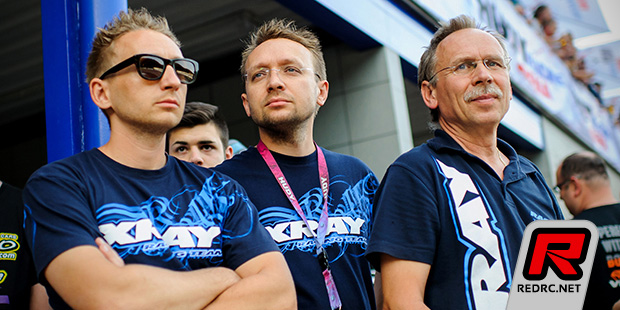
Sometimes it is easier for me to design something new which is a performance improvement than to argue and convince our sales and marketing department. I had a small dilemma, or what could also be called a nightmare. I was absolutely certain that the ARS suspension was an improvement for high-competition racing, but I was a little worried for regular drivers who do not have so much set-up experience and time to play around the different ARS settings. Would they get lost in the end? I had a working solution to include both standard and ARS suspensions in the kit, but I knew I will be challenged by our sales and marketing departments who would of course be doing financial analyses of how much we could include in the kit and how much this would be offset by a price increase. I am very aware of the price war going in the electric touring car market, and I knew there is not much space to increase the price of the kit even if we were to include two different suspensions in the kit. Of course I knew how much the moulds and investment would cost, not only for the ARS but also for the other 2015 changes I had in mind. I was not in an easy situation. For weeks I tried to convince myself to include only the standard suspension in the kit and offer the ARS only as an option, but I really liked the ARS and badly wanted to include it in the kit. In internal discussions with Juraj and Mario, I always need to back up and prove my decisions, but from time to time anyone can pull an ace from their sleeve and vote over the others. I was so convinced about the ARS that I pulled out my long-time ace out of my sleeve and over-voted the board. The ARS suspension would be included in the car kit along with the standard suspension.
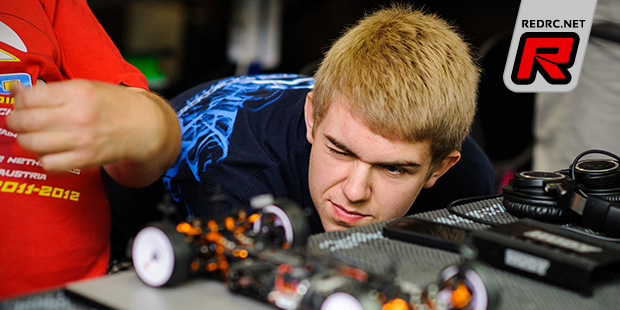
While working and testing the ARS system, we also actively tested different chassis. As chassis flex is one of the most important influences of car behaviour, we did not stop working in this area either. I designed two different chassis layouts with three different widths. During the entire season we tested these different chassis at the Worlds warm-up, ETS races in Luxembourg, Austria and in Trencin as well as at the European Championships. After the season I had great experience and knowledge on the behaviour of each chassis, as we drove in all kinds of conditions including high- and low-grip tracks, large open tracks and small technical tracks. In the end it was extremely difficult to choose only one chassis, as each performed well in specific condition. However, finally everyone agreed that the best choice was the 86mm wide chassis.
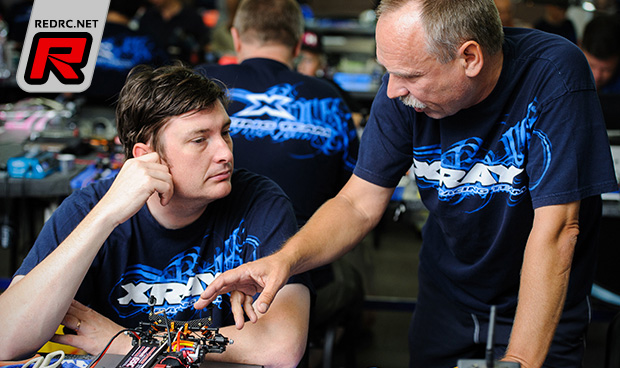
Brainstorming about possible changes for 2015, I was always thinking about what I myself am missing and wanting. On my T4’14 I used the upper clamps in the outer and sometimes middle roll centre positions. With the short linkage the car was sometimes too stable and sedate, while with the longer linkage the car was (in front) too sensitive. I was missing something exactly in between and as such I decided to redesign the layout to make the roll centre positions around the mostly commonly-used position be closer to each other. I made one roll centre with 1mm shorter and 1mm longer linkages compare to older short linkage. The shorter linkage would provide more rear traction and more steering response in front (which is very good for low-traction tracks), while the 1mm longer linkage would be beneficial for high-traction tracks where the shorter linkage would make the car too nervous and longer linkage would be too stable.
I was really happy with the car’s handling and I was sure that these changes were enough to improve performance. I was also very pleased that once again we moved development further along. It was just by coincidence that I just committed the motor mount bulkhead into production when I got into a discussion with Francesco if there was anything we had forgotten in the 2015 update. He brought forward his recent problem of a tweaked chassis after a crash, where the tweak came from the motor mount. I could hardly believe this as I had never personally experienced this but just for any case I stopped the production the motor mount bulkhead!
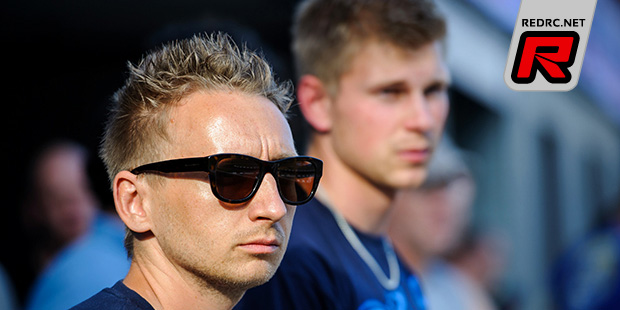
Francesco demonstrated by putting his car on the scales, and oddly tightened the motor mount – the result was a weight balance change. After some brainstorming about how we could make a tweak-free motor mount, I shared this issue with Juraj and right away he pointed me in the right direction – to focus on the countersunk screws which usually are the ones that can tweak a car. Countersunk holes have tolerances, and countersunk screw heads have tolerances, too. In some rare situations when two opposite tolerances are combined, the result is a tweak effect. After some examination and different ideas, the final solution to negate the tweak effect was to make the layshaft bulkhead and motor mount as a solid one piece and to use a small motor mount plate that is connected to the motor mount via a button-head screw – no more countersunk screws! After I made the new prototype we tested back-to-back with Francesco on the weight balance scales, and the problem was solved. I had to update the production programs and confirmed to start the production of the new motor mount bulkhead.
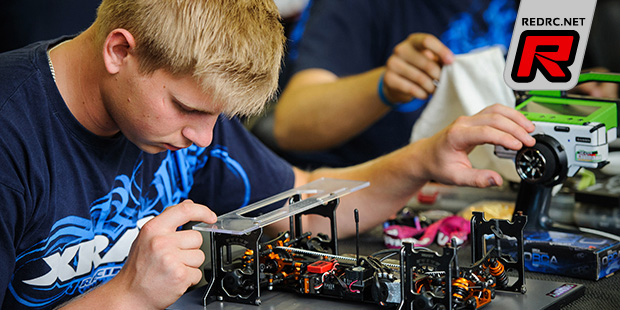
As time was flying past, we worked around several other ideas and many of them did not bring any improvements and were therefore rejected. But on the other hand I managed to incorporate some parts which were not at first thought to be a performance improvement but rather an improvement in ease of working on the car. One of such ideas was to change the system of adjusting the anti-roll bars. When the anti-roll bar did not work properly on the current car, I had to take off the ball joints that connects the wire with the arm, and had to straighten it by turning it 180° and then reconnect it with pliers. I really did not like that as it was too much work and sometimes I needed to turn it only a little and 180° was too much. To make working on the anti-roll bars more easy, more precise, and quicker, I changed the anti-roll bar setting so a driver can adjust it with a 2mm screw driver from the top without any need to disassemble any parts from the car. Now the adjustment is much more accurate and precise. To remove any wobble and play of the anti-roll bars and allow them to work ultra-precisely, I redesigned the bulkheads which hold the ball-bearings so the anti-roll bars move smoothly and without excess play. From now on, you will love to work on the anti-roll bars.
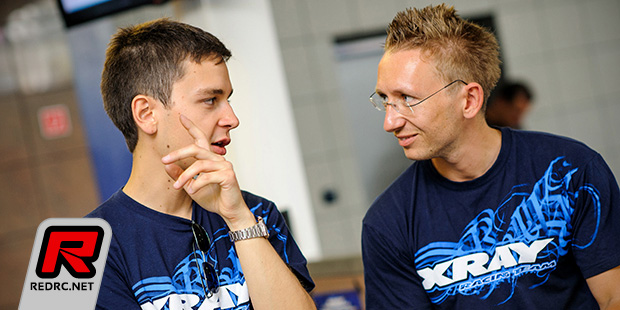
As most of the new developments are based on the real track experiences, there were another two items I decided to change after the race at Snowbird Nationals. In Europe we race at open tracks with curbing, but while racing at Snowbirds with boards I have seen several drivers either breaking the front of the chassis from a straight-on crash into a board at full speed, or having their servo mount tweaked from the chassis as a result of another crash. I experienced this myself and so I put these two comments on the “2015 to-do list”. With finalising the 2015 specs, I also incorporated those two improvements which will be appreciated by drivers who race at tracks with boards. To minimise chassis breakage, I designed an upper bumper holder that works as a “back stop” so in a crash it will reduce the energy of the lower bumper and will minimize chassis breakage in the front. To ensure the servo mount would not tweak after a crash, I redesigned the floating servo holder so it is now longer and uses an extra middle screw to ensure it will not move even in serious crashes.
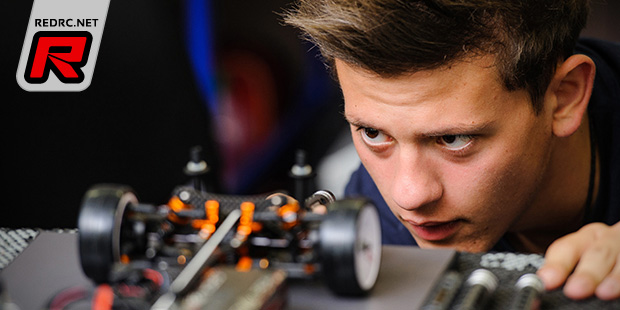
We have a lot of races on our schedule and so many classes to run in this season. I have been working on all of them at the same time, and I am convinced that we have incorporated all the finest and best improvements for the T4’15 that will make the car perform even better while being easier to work on. Into this new car I have put in all the best ideas and innovations based on my own experiences, the experiences from our entire team, and also from all our customers that contact us online or personally at all the races we attend around the world during the year. Further development of the car would not be possible without the ongoing support of our customers, who I want to personally and wholeheartedly thank. This is indeed a team effort with a lot of dedication and hard work by everyone involved. I want to thank Alexander Hagberg, Francesco Martini, Marek Cerny, Adrian Berntsen, Alessio Menicucci, Jan Ratheisky, Marco Kaufmann, Olly Jefferies, Paul Lemieux, Steven Weiss, Tim Wahl, Bruno Coelho, Ralph Burch, Eric Anderson, and everyone else. Of course a big thanks goes to Juraj for giving me good ideas and directions during the development.
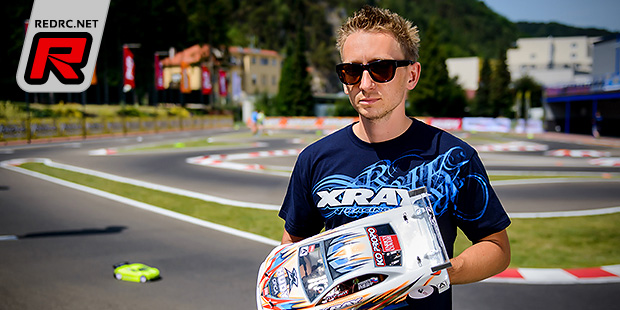
With the 2014 achievements and victories we achieved with the T4’14 platform – including the ETS Stock title, European Champion Stock title, USA Modified and Stock title, Snowbird national win, LRP Masters win, and dozens of national titles collected during the season – it will be very challenging for the team to surpass this. But of course we will do our best and during 2015 we will be at all the races around the world to provide technical support and service to our customers, and of course to work on the further improvements for 2016. We hope to see you all soon!
